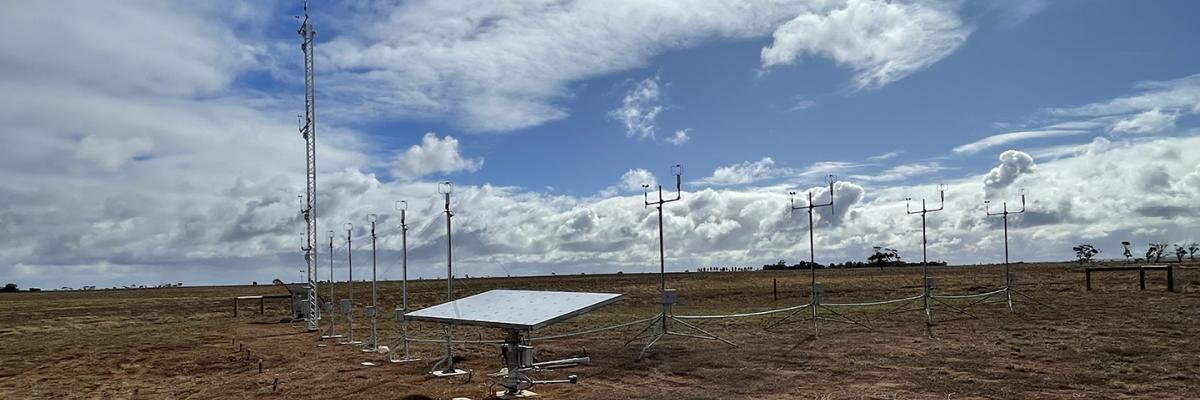Milestone reached for Atmospheric Boundary Layer Research Facility

Tuesday, May 17, 2022 marked an important milestone in the installation of the Atmospheric Boundary Layer Research Facility (ABLRF) at the University of Adelaide Roseworthy campus – the lattice section tower with a height of 12 metres was raised with a 25 tonne Franna crane. In the past few months, Mechanical Engineering researchers Dr Matthew Emes and PhD student Matthew Marano have worked with SET Electronics and Instrumentation team leader Philip Schmidt to lay power and communication cables, mount junction boxes, conduit, guy wires, cross-arms and right-angle brackets, security cameras, ultrasonic anemometers and cup anemometers on longitudinal and spanwise arrays of 3 metre masts and a 12 metre tower laying horizontally with a hinged base plate.
The installed 12 metre tower will resolve three components of wind velocity and temperature at logarithmically spaced heights above the surface. A spanwise array of five masts with 3 metre height are orientated perpendicular to the south-westerly prevailing wind direction from the 12 metre tower. An additional four tripod masts with ultrasonic and cup anemometers are spaced in the longitudinal direction of the prevailing wind. A heliostat model containing differential pressure sensors and a six-axis load cell has been installed at the ABLRF to measure load distributions at different tracking angles controlled using two linear actuators. The heliostat is remotely controlled and monitored through cellular networks and a standalone power system, consisting of two 315W photovoltaic panels and four 102Ah batteries.
The project goal is to investigate the discrepancies between the heliostat wind loads in wind tunnel and full-scale field environments. The ABLRF provides increased precision and resolution of near-surface turbulence data in the lowest 10 metres of the ABL, with high-frequency measurements of horizontal and vertical turbulence. Characterization of gust wind events and verification of wind load correlations with atmospheric turbulence parameters are crucial to further develop and refine heliostat design wind load predictions and guidelines.
The work is led by the University of Adelaide ASTRI heliostat wind load and aerodynamics research group with partners and collaborators from CSIRO, ANU, DLR, Sandia National Laboratories and National Renewable Energy Laboratory. The ABLRF is funded by the Australian Solar Thermal Research Institute (ASTRI) heliostat project, with contribution of ultrasonic anemometers and tripod masts by COtL.
The project team would like to acknowledge the CET, ISER and the University of Adelaide Infrastructure Campus Estate manager Mark Branson, Infrastructure project manager Michael Brewer and Roseworthy farm manager John Matheson for their support.
